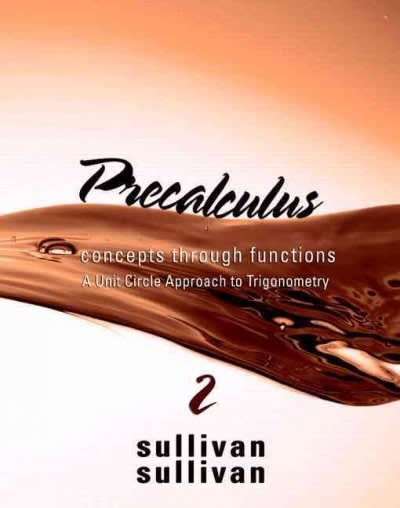Question
When people are anxious, they tend to be depressed. When they are depressed, they tend to be anxious. The relationship between anxiety and depression is
When people are anxious, they tend to be depressed. When they are depressed, they tend to be anxious. The relationship between anxiety and depression is well-known to psychologists, but why that relationship exists is not well understood. Does one lead to the other? Are they both part of the same disorder?
Suppose you are exploring how measures of anxiety and depression predict future suicide attempts among men over 65. You use the Beck Depression Inventory (BDI) to measure depression and the Beck Anxiety Inventory (BAI) to measure anxiety in a sample of 279 men over 65. Both inventories consist of 21 questions with a possible 3 points per question. Thus, each measure ranges in value from 0 to 63.
1. Which of the following measures or tests would be appropriate to apply to the two numerical scores (withoutany recoding) to ascertain the strength of the relationship between the BDI and the BAI in your sample of men over 65? (Hint:By "recoding" we mean converting data values into ranks, or using the data values to classify participants into categories, such as "not depressed" and "depressed.")
a. An independent-measures t test
b. The Pearson correlation coefficient
c. An analysis of variance (ANOVA)
d. The Spearman correlation coefficient
2. Suppose you decide to classify the men over 65 into four groups according to their BDI scores. You define those with BDI scores greater than 28 as "severely depressed," those with BDI scores between 20 and 28 as "moderately depressed," those with BDI scores between 14 and 19 as "mildly depressed," and those with BDI scores of 13 or less as "minimally depressed." You want to know if the four groups have different levels of anxiety, as evidenced by their mean BAI scores. Which of the following measures or tests would be most appropriate to apply?
a. A Spearman correlation coefficient
b. An analysis of variance (ANOVA)
c. An independent-measures t test
d. A chi-square goodness-of-fit test
3. Now suppose that, in addition to classifying the men over 65 into four depression groups according to their BDI scores, you also classify them into four anxiety groups according to their BAI scores. You define those with BAI scores greater than 25 as "severely anxious," those with BAI scores between 16 and 25 as "moderately anxious," those with BAI scores between 8 and 15 as "mildly anxious," and those with BAI scores of 7 or less as "minimally anxious." With the data now recoded, the most appropriate measure or test to investigate the relationship between depression and anxiety is:
a. A Spearman correlation coefficient
b. An analysis of variance (ANOVA)
c. A repeated-measures t test
d. A chi-square test of independence
4. How many degrees of freedom does the test have when the participants were classified into four depression groups and four anxiety groups? df =
Step by Step Solution
There are 3 Steps involved in it
Step: 1

Get Instant Access to Expert-Tailored Solutions
See step-by-step solutions with expert insights and AI powered tools for academic success
Step: 2

Step: 3

Ace Your Homework with AI
Get the answers you need in no time with our AI-driven, step-by-step assistance
Get Started


